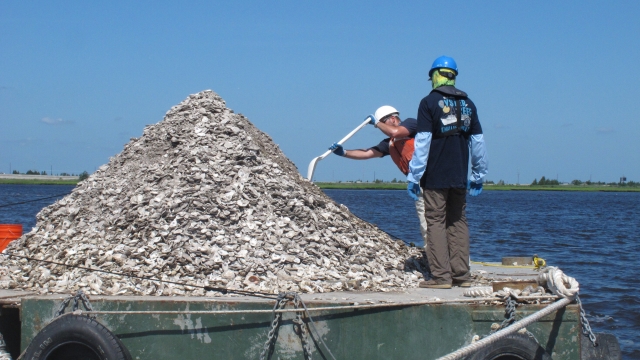When we go out to eat and have oysters, we see the shells just get tossed away. But, the Galveston Bay Foundation in Texas is collecting those leftover shells to increase the number of oyster beds, which are being destroyed by extreme weather.
Oysters are a major component of Galveston Bay, but hurricanes, droughts and freshwater floods have nearly killed them off.
Executive chef Bobby Matos serves about 500,000 oysters every year at just one of his restaurants, La Lucha. For years his restaurants simply discarded the leftover shells, but now they recycle them and put them in the bay.
"It was always a byproduct that made no sense to just put in a landfill," Matos said. "Now they can bring the oyster shells back and put them in and it helps with the storm surge. It helps regrowing oyster populations, which is a good thing for us. It keeps us in business."
Last year the foundation collected 181 tons of leftover shells. Since they started they've picked up 1,200 tons. The shells are dumped by the truckload at a lot near the bay where the shells sit out in the sun to cure for six months.
"We don't want to introduce the shells into the water and they be contaminated," said Shannon Batte, a habitat restoration technician for Galveston Bay Foundation. "So we make sure that they are fully clean before we put them back into the bay."
Eventually, the shells will either be dumped in the bay or given to local residents to create small oyster gardens along the waterfront. The new oyster reefs have not only increased the number of oysters in the water, but have also helped improve the health of Galveston Bay.
This story was originally published by Scott Withers on Newsy.


